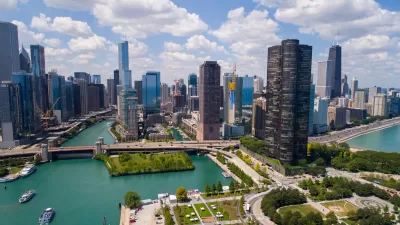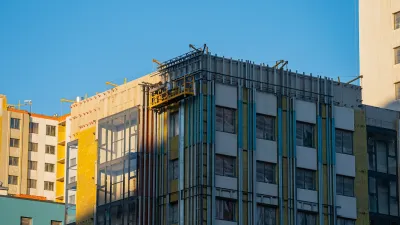An under-reported loan model called Property Assessed Clean Energy, or PACE, financed $660 million of sustainable building improvements from 2016 through 2018.

"Developers grappling with the cost of new laws enacted to combat climate change are taking advantage a little-known finance tool to help pay for green-building requirements," reports Joe Gose.
"The model for the loans, known as Property Assessed Clean Energy, was created in 2008 to fund improvements that create environmentally sustainable and resilient properties," adds Gose. "Now, developers are turning to PACE loans to help create more energy-efficient buildings and meet tougher environmental standards."
"Promoters say a PACE loan is better than conventional debt used for similar upgrades because it is typically cheaper, it has a fixed interest rate and terms are 20 to 30 years instead of three to five," explains Gose. "What’s more, unlike conventional loans, PACE financing becomes an assessment on the property. It is paid annually along with the real estate tax bill, and it transfers to new owners."
Gose is writing for The New York Times, but the examples included in the article are taken from around the country, like in the city of Omaha, where developers Shamrock Development used PACE to fund LED lighting, heat pumps, and low-flow water fixtures, among other building features, for the $205 million mixed-use development called the Capitol District.
The article includes more details on the benefits of the PACE program for developers, as well as a history of the program (born in Berkeley, California), and the expanding pool of money (even former baseball player Alex Rodriguez has sent large chunks of money toward lenders) available for PACE loans.
FULL STORY: To Meet Demand for Green Buildings, Developers Get a Leg Up

Planetizen Federal Action Tracker
A weekly monitor of how Trump’s orders and actions are impacting planners and planning in America.

Congressman Proposes Bill to Rename DC Metro “Trump Train”
The Make Autorail Great Again Act would withhold federal funding to the system until the Washington Metropolitan Area Transit Authority (WMATA), rebrands as the Washington Metropolitan Authority for Greater Access (WMAGA).

The Simple Legislative Tool Transforming Vacant Downtowns
In California, Michigan and Georgia, an easy win is bringing dollars — and delight — back to city centers.

The States Losing Rural Delivery Rooms at an Alarming Pace
In some states, as few as 9% of rural hospitals still deliver babies. As a result, rising pre-term births, no adequate pre-term care and harrowing close calls are a growing reality.

The Small South Asian Republic Going all in on EVs
Thanks to one simple policy change less than five years ago, 65% of new cars in this Himalayan country are now electric.

DC Backpedals on Bike Lane Protection, Swaps Barriers for Paint
Citing aesthetic concerns, the city is removing the concrete barriers and flexposts that once separated Arizona Avenue cyclists from motor vehicles.
Urban Design for Planners 1: Software Tools
This six-course series explores essential urban design concepts using open source software and equips planners with the tools they need to participate fully in the urban design process.
Planning for Universal Design
Learn the tools for implementing Universal Design in planning regulations.
Smith Gee Studio
City of Charlotte
City of Camden Redevelopment Agency
City of Astoria
Transportation Research & Education Center (TREC) at Portland State University
US High Speed Rail Association
City of Camden Redevelopment Agency
Municipality of Princeton (NJ)





























